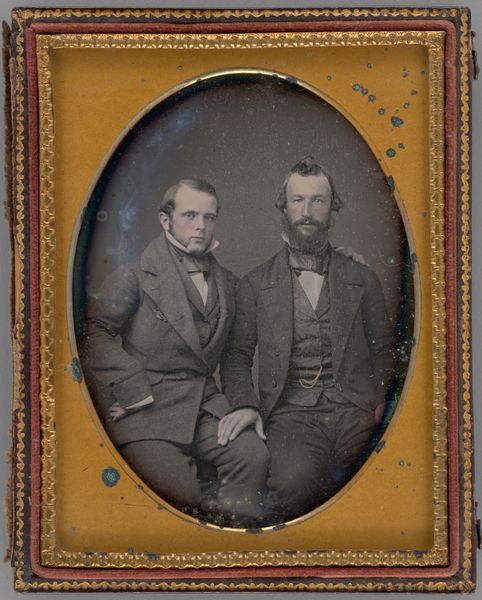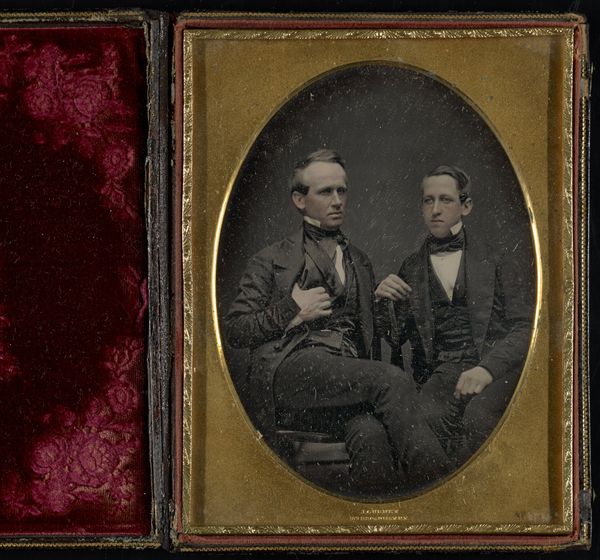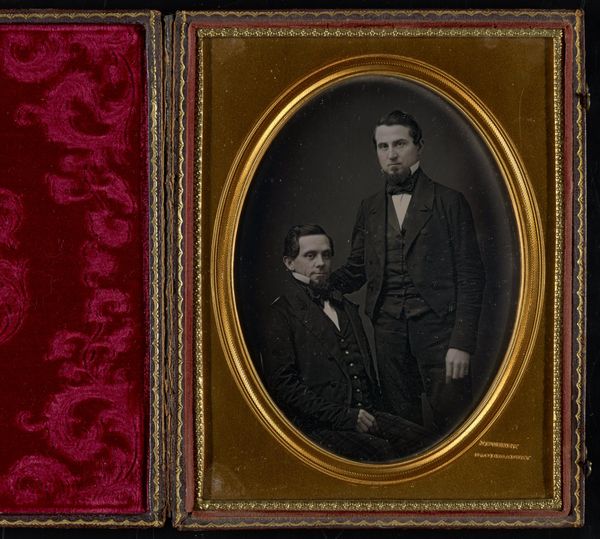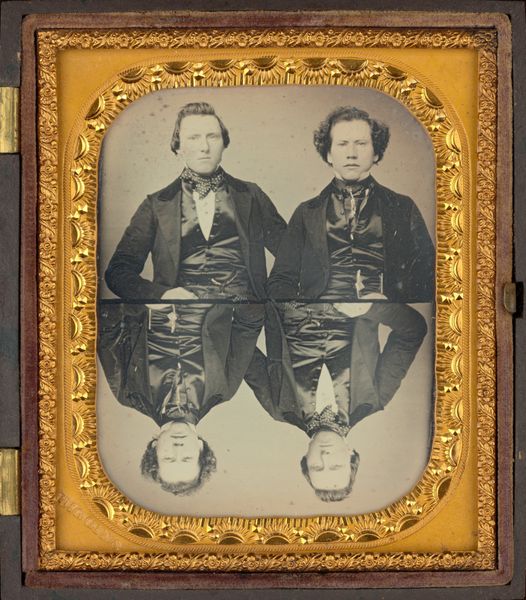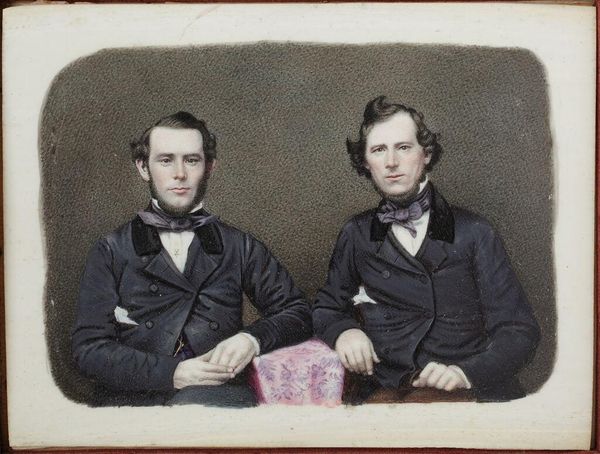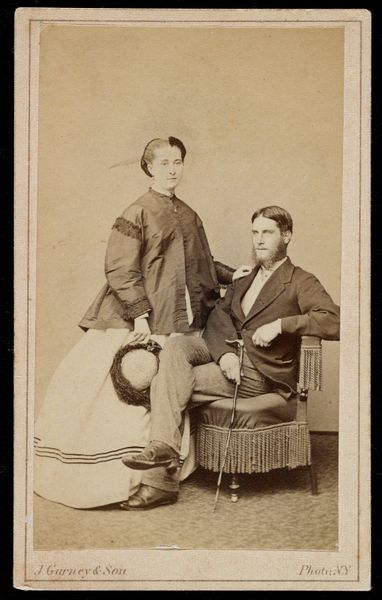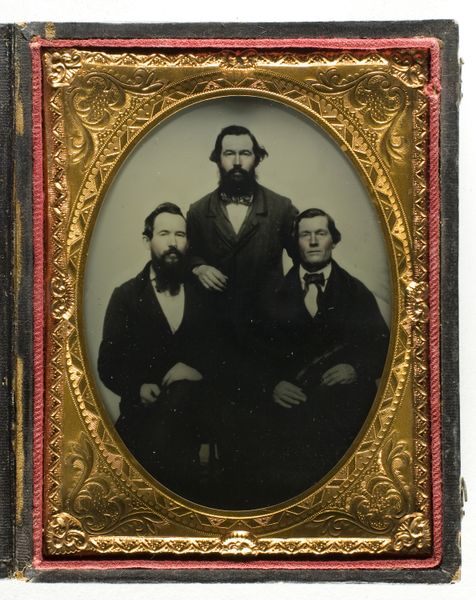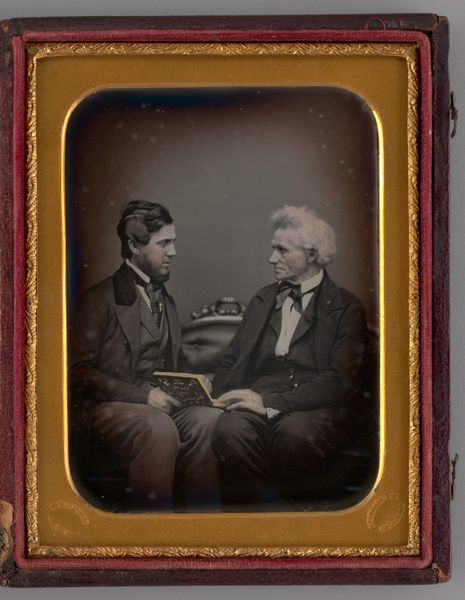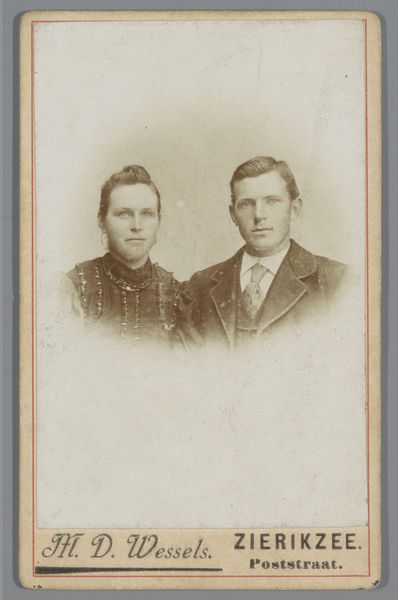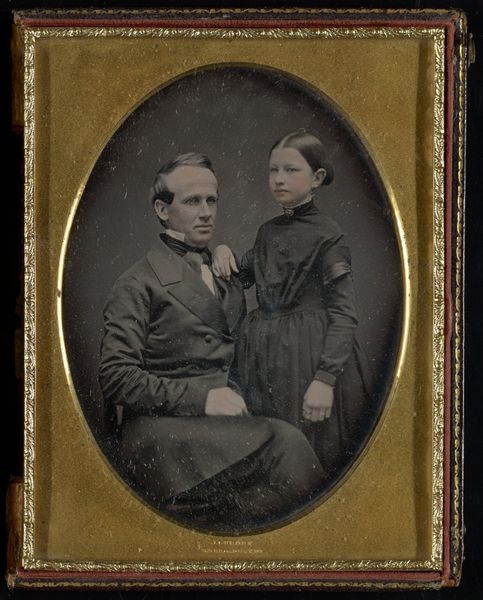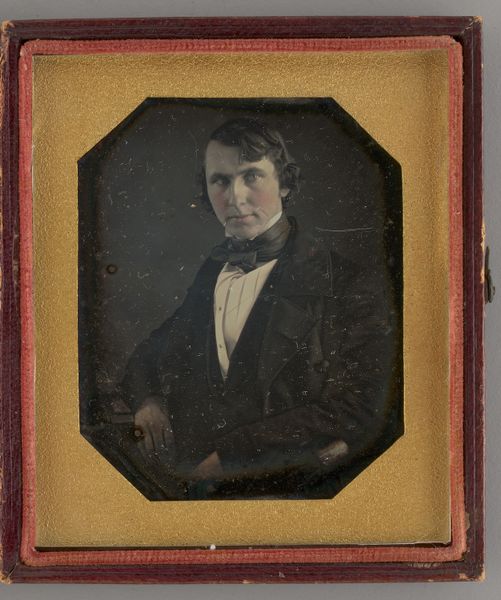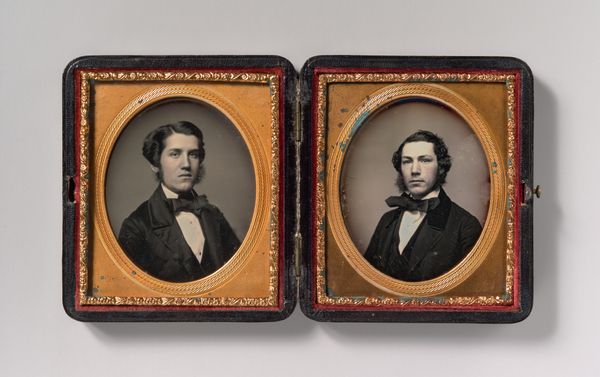
daguerreotype, photography
#
portrait
#
16_19th-century
#
sculpture
#
daguerreotype
#
photography
#
group-portraits
#
realism
Dimensions: 8.5 × 7.3 cm (frame)
Copyright: Public Domain
This small photographic image of a seated man and boy, housed in a decorative frame, is of unknown date and origin. Its cultural context is rooted in the rise of photography as a means of memorializing loved ones. The daguerreotype process, in which an image is exposed on a silvered copper plate, was a revolutionary form of portraiture that democratized image-making in the 19th century. Prior to this, painted portraits were a luxury afforded only by the wealthy, but photography allowed people from the middle classes and below to capture their likenesses. The formal dress of the subjects, the careful pose, and the act of placing the image in a decorative frame, speaks to the cultural codes around representation and the desire to emulate established social norms. To understand the meaning of this artwork, we must rely on social history. Photography archives and genealogical records can help to reconstruct the social world of the subjects. Their clothes can tell us something about their backgrounds, or the conventions of the time. Only through a multi-faceted investigation can we understand the significance of this small picture.
Comments
No comments
Be the first to comment and join the conversation on the ultimate creative platform.
